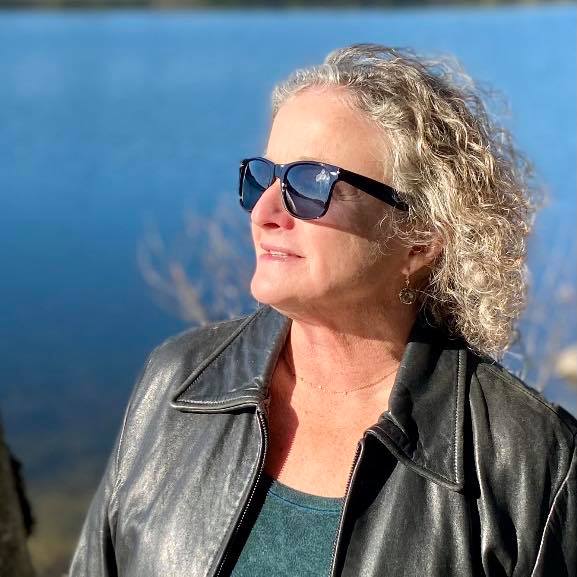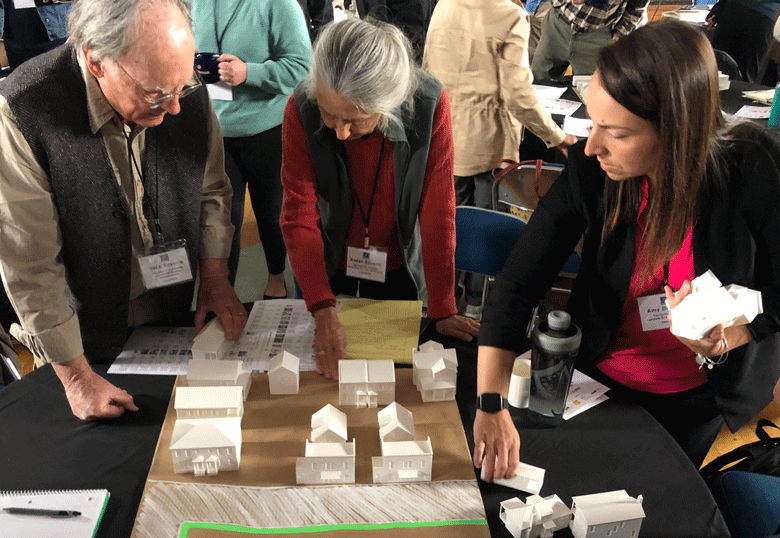When Nancy Smith first came to Maine in 1981, she was thinking, professionally, about the growth of trees and forests. Today, her work focuses on ensuring that Maine communities retain their character and function. Or, in other words, that they grow smart.
Smith grew up in Connecticut and went to college in Durham, N.H. to study forestry. She had considered attending the University of Maine.
“Orono seemed too far north,” she recalls, yet ironically, her first job interview—and the job itself—were in Lincoln, Maine.
Though an out-of-stater, Smith’s family’s history has Maine ties.
“We have roots that go back to the 1800s in Belfast and Westbrook, and even the late 1600s in Portland. I felt like I belong here,” she says.
Smith later lived in central Maine and served four terms in the Maine House of Representatives, representing Monmouth, Litchfield, and Wales. Thirteen years ago, she joined the nonprofit advocacy group GrowSmart Maine, where she is CEO.
Our interview with her was edited for length and clarity.
The Working Waterfront: How do you define smart growth?
Smith: Smart growth is a set of principles that promotes long-term sustainable solutions for communities. It’s about providing choices in how you manage growth and change. Change is going to happen. It is human nature to try to put a stake in the ground and say, “I like the way it is now. Stop.”
And that’s not what happens. Who is going to be in charge of what that change looks like? It’s not just the immediate—what’s it going to look like 20 years from now, 50 years from now?
Smart growth is that balancing act, so that we have what we need now but also making sure our communities are as strong in the future as they are now.
WW: And that term has been in usage by policy makers for, what, 20 years? Longer?
Smith: It probably came out of the ‘70s when we started looking around and said something isn’t right. I think everybody has stories about sprawl, which is what we’re trying to prevent. I grew up outside of Hartford, Conn. The places I grew up sledding became hundred-unit single-family subdivisions. I didn’t know what they were called, I just knew I couldn’t go sledding there anymore. And it felt “off.”
Grow Smart has been working on building housing where it makes sense in the long term.
We want to keep those things that make us proud to be Mainers, but we also need economic activity and opportunities.
WW: I’ve tried to make the case that there’s a positive connection, a causality between smart growth and economic activity. Can you talk about that?
Smith: Oh, absolutely! I describe the work that we do by saying that GrowSmart Maine—smart growth—is the one place where historic preservation and downtown revitalization come together with farmland protection. These are really opposite sides of the same coin.
And a community should never feel they have to choose between the two. Those principles reinforce each other.
The best tangible example I have of that is that the farmers market is where you see it. When the farms have the land to produce the product—mostly food, but also other things—that people are interested in, they bring them into the community where people are. There is economic activity in farmers markets. And they are in the downtowns, where people, ideally, are interested in living.
WW: What are the unique challenges that the coast of Maine is facing? I see our beautiful downtowns—whether it’s Rockland, Belfast, Damariscotta, or Eastport—they’re a real draw to young people. I feel like these downtowns are threatened.
Smith: Your readers are going to be the experts on that. But the working waterfront—if you don’t have access to the clam beds or the piers, and don’t have the infrastructure fishermen need on site, then you’re losing the economic driver of what makes it a fishing community. That’s got to be at the forefront.
I think the coast is seeing it as much and probably more than the rest of the state. Now that we’re finally getting people to move to Maine, which we’ve been saying we need because we’re not producing enough native Mainers, what does that look like? What does it mean for pricing out working people? That is, I think, exponentially more difficult on the coast.

I live in Ellsworth now. I lived in Monmouth outside of Augusta for 30 years. When I drove from Monmouth to Portland, I would see lobster traps outside of houses in Lisbon. I know, because of my work, it’s because they can’t afford to live on the coast.
I think that tension has been there for decades. But it’s going be more so because people can live and work anywhere, and they come to where they love, which is Maine, because Maine is amazing.
What does that do to the infrastructure they need? And housing as a piece of that?
WW: That leads into my next question—how can smart growth make housing more affordable?
Smith: What GrowSmart has been working on in the legislature is removing barriers and creating incentives for building housing where it makes sense in the long term. Some of the proposals we’ve made that will make it easier and less expensive to build affordable housing include a complete rewrite of the growth management law, which is where comprehensive plans are.
This is so communities can really think about, “What are the ways we want this town to feel like and look like, and what are the barriers we have in place with our own zoning ordinances?”
I think the coast is seeing it as much and probably more than the rest of the state.
Another really cool proposal would have the state create a catalogue of preapproved residential building types, from cottages and single-family to duplex and four-family to eight- to ten-unit. The best comparison I can make is the Sears catalogue houses.
So if the state comes up with a selection of five different categories and eight different choices within those, if we come up with a catalogue, a municipality goes through all their public processes and says, in our village centers or downtowns, these are the buildings that we feel are a fit. We like these. If a developer came in to do these, we’d be OK with that.
A developer can still propose building whatever they want, but if they choose one of those pre-approved building types for the areas that the town has identified as where they want growth, then the municipal approval process is simply administrative. It’s not short-circuiting the public process, because the public approval has already happened.
Let’s have these conversations about what we want for a particular area before there’s a specific proposal that gets people excited.
WW: For a time, back in the ‘90s, towns started adopting ordinances that mandated 2-acre or 5-acre minimum lots, but that’s now understood as wrong. Why?
Smith: No one is benefiting from that, or from requiring 200 feet of road frontage. And talk about the cost implications—when a household has to have at least two vehicles, there is a calculation that the general cost of owning a vehicle is $800 a month, so every time we require a family to own two, that’s $1,600 a month.
There’s also a cost to the municipality. It’s that many more roads to plow, that many more school buses. All the services that we expect at 200-feet a shot, or in the village at 20 feet?
WW: Does the legislature understand these issues? And do people in inland towns understand the pressures?
Smith: I’ve been with GrowSmart for 13 years and for the first ten years, and I would have to insert smart growth ideas into conversations. Because of the housing crisis, and the combination of the pandemic and the climate crisis and people moving here because they’re thinking about where they want to be in 30 years, it’s now at the forefront.
Now, conversations are leading with land use and smart growth.
WW: What about commercial sprawl—places like High Street in Ellsworth, Cooks Corner in Brunswick. Is there any way to reverse that?
Smith: Yes. And municipalities have tremendous power.
One proposal in the legislature was the “thriving corridors” bill. It requires DOT to work with municipalities and land use when we have “graying” commercial strips that aren’t working. How do we have them work as mixed-use spaces?
Some changes include putting in a hotel, workforce residential, along with commercial. The magic of that is they use the same parking spaces at different times of day. If we’re going to do that and get creative with mixed use, and invite people to walk on sidewalks, we need to make roads safe.
We really need to coordinate the investments that Maine DOT makes and our impression of what a road is. If we want transportation to be part of the planning of what we our communities to be, we need to rethink it. I live on a street in a neighborhood. Most of the traffic is neighbors coming and going. Roads are bigger, often with numbers on them. Then you’ve got “stroads,” a street serving the role it wasn’t built to do. When we get too many “stroads,” it doesn’t work for anybody.
WW: How can smart growth mitigate climate change?
Smith: It fundamentally does. When communities are thoughtful and take all of these components and think about them together, your economy is stronger, your municipal budget is stronger, and the climate implications are better. If people have to drive less and have more options when they do need to use transportation, it’s better economically, socially, it’s better for farmland. It’s better for the climate.





